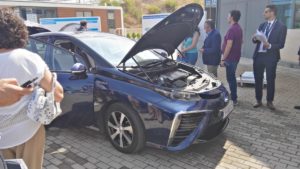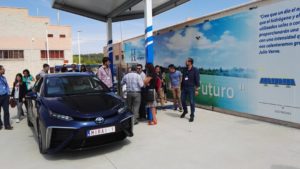Hydrogen with spinach: will it be for iron?

Photosynthesis of spinach generates energy:
Israel has developed a photo-bio-electro-chemical cell capable of generating electricity and hydrogen, the process is related to photosynthesis of plants.
According to the journal Nature Communications researchers at the Technion Institute have achieved this unique combination of cell and plant membranes called BPEC.

Energy cell
Add an iron compound to the solution:
The electric current is achieved thanks to a ferric compound where iron allows the transfer of electrons from the biological membranes to the electric circuit.
They manage to generate hydrogen:
The electric current can also be used to create hydrogen gas by adding electrical energy from a small photovoltaic cell that absorbs excess light.
Hydrogen is a clean fuel:
Unlike the combustion of fossil fuels the product of the combustion of hydrogen does not pollute, it is clean water.
This process creates a closed cycle with water that allows the conversion and storage of energy in hydrogen gas.
Popeye was a visionary and an entrepreneur:
For me it is clear that in the plant world there is a lot of energy, biofuels are known that are used as substitutes for diesel, gasoline or wood itself in ovens and boilers.
Popeye like Henry Ford were visionaries in the use of vegetables like energy source, the latter already designed cars that worked with bioethanol in its time.
The question I now ask is will it be possible to obtain an energy cell from a tomato, chard or leek as well as spinach?
The need for energy is increasing:
By my profession, I know that the planet’s ability to grow biofuels is very limited compared to energy needs. A solution can be this combination of the organic and the vegetable that at the same time is able to produce electricity and hydrogen.

























